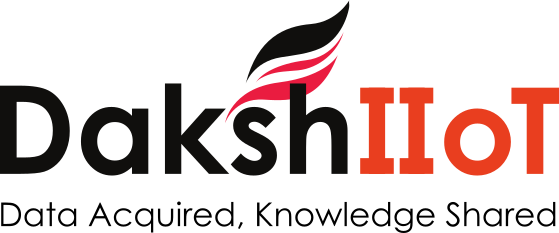Using DakshIIoT, your systems can be monitored & vetted thoroughly for V.E.T (Vibrations, Electricals, Temperatures) to sense and predict any maintenance issues with your plant or machinery thus preventing breakdowns.
Asset monitoring, also known as asset tracking or asset management, refers to the process of monitoring and managing physical assets within an organization. These assets can include equipment, machinery, vehicles, tools, or any other valuable resources.
Implementing asset monitoring in a factory can provide numerous benefits. It helps to optimize asset utilization, improve operational efficiency, reduce downtime, enhance maintenance practices, and increase overall productivity..
DakshIIoT asset monitoring software is often integrated with the concept of the Industrial Internet of Things (IIoT). IIoT involves connecting physical devices, sensors, and equipment to a network and collecting data in real-time. This enables the creation of a digital ecosystem where assets can be monitored, controlled, and analyzed remotely.
The Implementation Of Asset Monitoring In A Factory Typically Involves The Following Steps:
- Asset Identification: Each asset is assigned a unique identifier, such as a barcode, RFID tag, or QR code. This allows individual assets to be easily tracked and identified within the system.
- Sensor Deployment: Sensors or IoT devices are attached to the assets to collect relevant data. These sensors can measure parameters such as temperature, humidity, vibration, location, or operational status, depending on the asset and the desired monitoring requirements.
- Data Collection: The sensors collect data from the assets and transmit it to a central system or a cloud-based platform. This data can be accessed and analyzed in real time by stakeholders.
- Data Analysis: Advanced analytics techniques, such as machine learning algorithms, can be applied to the collected data to gain insights, identify patterns, and detect anomalies or potential issues.
- Reporting and Alerts: Based on the analysis results, the system can generate reports, dashboards, or notifications to inform relevant personnel about asset performance, maintenance needs, or potential risks.
To Get a Good Response From Implementing Asset Monitoring In a Factory, It Is Essential To Consider The Following:
- Clear Objectives: Define specific goals and outcomes you want to achieve through asset monitoring, such as reducing downtime, improving maintenance efficiency, or optimizing asset utilization.
- Comprehensive Asset Inventory: Create a complete inventory of all assets within the factory, including critical information such as asset type, location, maintenance history, and expected lifespan.
- User-Friendly Interface: Provide an intuitive and user-friendly interface for accessing asset data, reports, and alerts. This allows users to easily interpret and act upon the information provided.
- Maintenance and Training: Establish proper maintenance procedures to keep the sensors and monitoring system operational. Additionally, provide adequate training to employees using the system to maximize its benefits.

